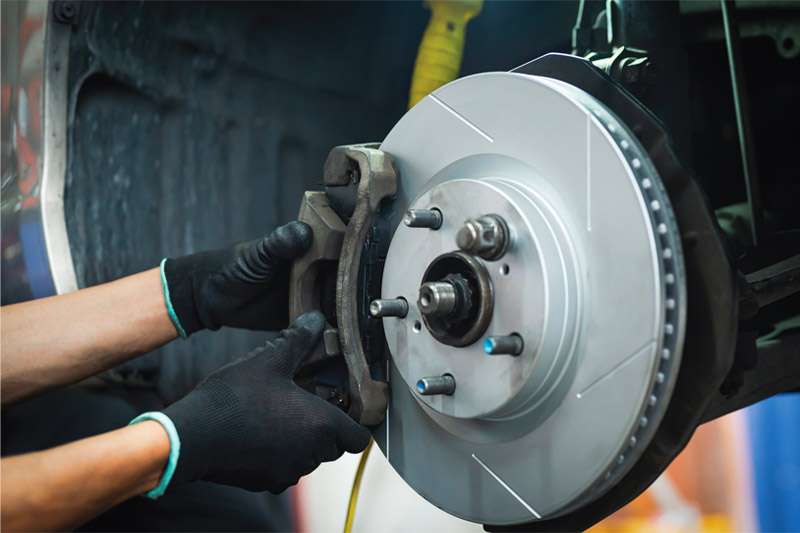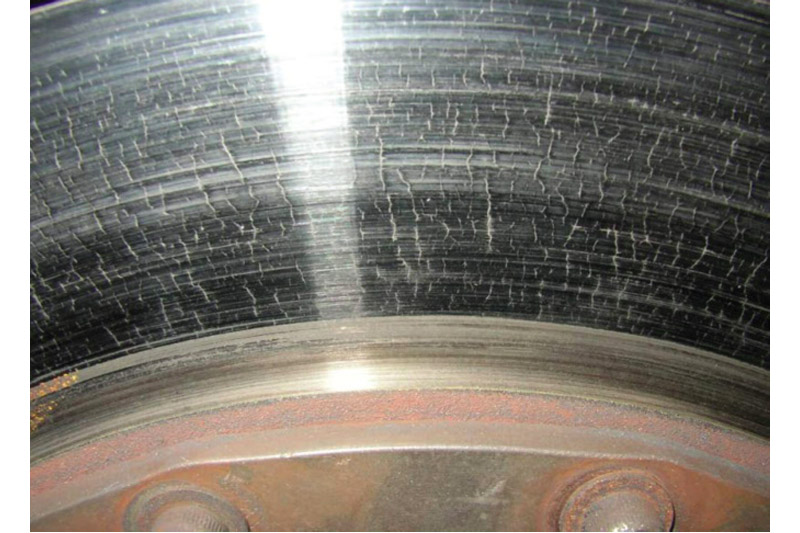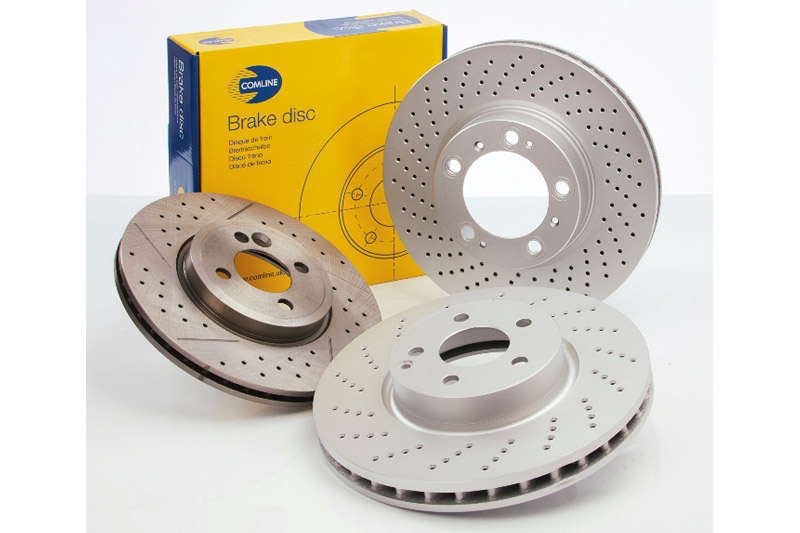Comline unravels the mystery of brake disc ‘crazing’

Comline Auto Parts believes it’s important to stay informed of the latest developments, terminology and procedures, to offer the best service to your customers. With a wealth of knowledge in this area, Comline’s renowned braking expert, Dr Keith Ellis – or Dr Friction as he is affectionately known by – delves into the intriguing phenomenon that is brake disc ‘crazing’:
Technicians may have encountered a scenario where they are inspecting a vehicle’s brake disc and notice an unusual pattern on its surface: a cluster of small, hairline cracks resembling ‘orange peeling’ or the appearance of crazy paving.
This phenomenon is what experts refer to as brake disc ‘crazing’ – heard of it before (below)? These clusters of cracks can vary in size and are particularly noticeable, especially on vehicles with open-style alloy wheels.
So, what’s causing it? Essentially, it’s a tell-tale sign that the brake disc has been subjected to high temperatures, indicating that the driver has been pushing their brakes to their limits, quite literally driving their brakes crazy!

Quality assurance
It’s crucial to understand that ‘crazing’ is not necessarily indicative of a quality issue with the brand of brake disc chosen for the vehicle. Instead, it’s an occurrence that affects all traditional cast metal brake discs when exposed to high temperatures. The good news is that these cracks are typically superficial and should not pose any serious issues beyond their unsightly appearance.
However, we emphasise the importance of a professional mechanic supporting motorists with a thorough inspection and expert diagnosis, as there are other types of cracks that can occur within a brake disc which might be more serious. Whilst cracks typically associated with crazing are largely superficial, any crack that appears to go part, or all of the way through the disc, must result in the disc being replaced immediately.
Of course, safety always comes first in the world of automotive maintenance, so in the event of doubt, we would strongly recommend the brake disc be changed – that’s where you come in, of course!

The ‘blueing’ effect
Sometimes, crazing isn’t the only visual indicator of high braking temperatures. Technicians may also come across the ‘blueing’ of the brake disc surface. This issue manifests as patches of the disc take on a blue tint, also in response to intense braking temperatures. Notably, it is possible to observe disc blueing without crazing.
Conclusion
Understanding brake disc crazing is essential for every aftermarket professional – not just technicians. Our extensive experience in supplying high-quality brake discs sheds light on this intriguing issue, reassuring professionals that ‘crazing’ is often a benign problem related to high braking temperatures.
By staying informed and seeking knowledge from the likes of Comline when in doubt, both you and technicians can continue to provide outstanding service, ensuring road safety remains a top priority.
This latest technical insight is part of our blog, which contains an archive of material that includes explanations of technical terms, best practice advice and product information. This platform is updated regularly, so why not check it out?








